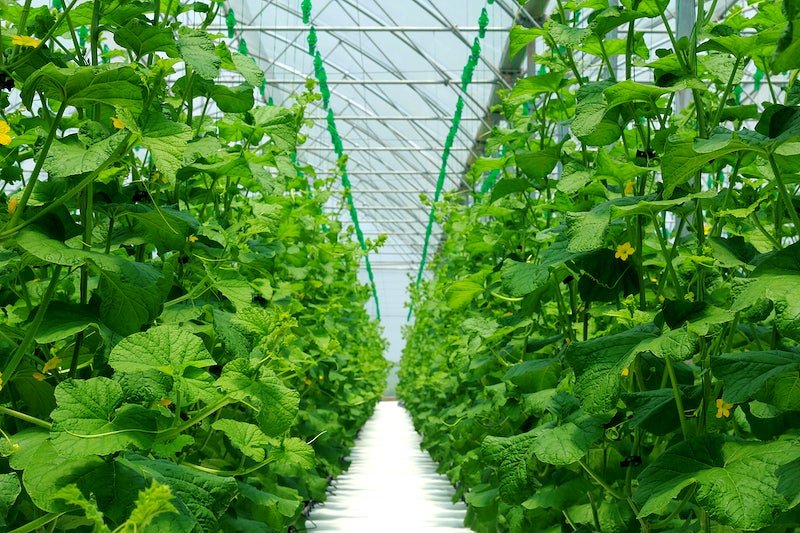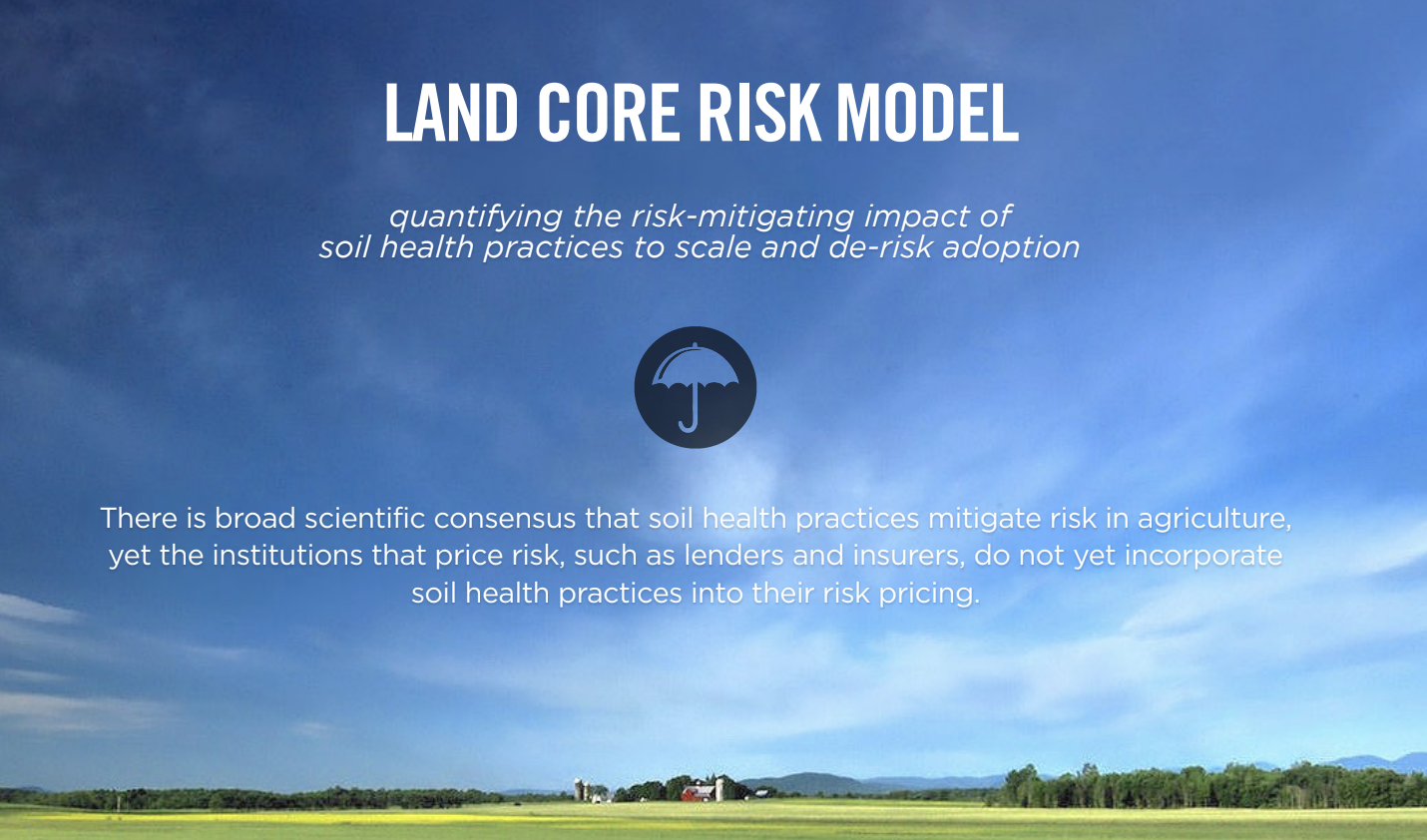Posts: All | Policy | Risk & Resilience | Education | Newsletters | Events & Announcements
The beta version of the online, interactive Risk Model Soil Health Tool is now available! The development of this tool would not have been possible without the brilliant team from the Schmidt Center for Data Science and the Environment (DSE) at the University of California, Berkeley.
We're thrilled to share that our team’s first academic manuscript, titled “Diversified crop rotations mitigate agricultural losses from dry weather,” has been submitted for peer review! In the meantime, the "pre-print" manuscript is available on agriRxiv.
The Land Core Risk Model is quantifying the economic risk-mitigation value of specific soil health practices by examining the correlation between the implementation of these practices over time and their impact on yield.
Pilot programs are exploring the opportunity to offer farmers improved financing terms based on their adoption of regenerative agriculture. The goal is to bring an expanded scale via financial incentives structured differently than dollars per acre for adoption.
Insurers offer discounts for avoiding smoking and good driving because these practices are proven to mitigate risk and save them money. So should insurers and agricultural lenders offer farmers that look after their soil a ‘good soil discount’?
Researchers with the University of Arkansas System Division of Agriculture are conducting research examining soil health practices and their impacts on crop risk insurance premiums and other financial factors often faced by farmers. Lawson Connor, an agriculture economist for the Division of Agriculture, is the primary investigator for Arkansas’ involvement in the research. He is joined by researchers from U.C. Berkley and Rice University.
Ever since the federal government created the Soil Conservation Service following the Dust Bowl, the correlation between soil health and agricultural resilience has been generally well understood. However, almost a century later, we’re still struggling to accurately quantify how specific soil health practices reduce production risks. As a result, these practices remain largely unaccounted for in risk pricing models across finance, investment and insurance, and farmers are not compensated through financial discounts for adopting them.
We are thrilled to announce that the Foundation for Food & Agriculture Research (FFAR) is awarding a $715,611 Seeding Solutions grant to Land Core to create an unprecedented market-based, actuarially-sound model that can determine the risk-mitigation benefits and related cost savings associated with specific soil health practices. Family foundations are providing matching funds for a total $1,449,611 investment. The model is helping to create the economic rationale for agricultural lenders and insurers to offer financial incentives, such as better terms or lower loan rates and insurance prices to producers adopting good soil health practices.
On September 13, 2022, our Executive Director, Aria McLauchlan, and our Director of Strategy, Harley Cross, participated in a roundtable on "Creating Regenerative Opportunity for Ag Lenders" as part of Green America’s Soil & Climate Alliance (SCA) Virtual “Financing Regenerative Transitions” Roundtable Series. Watch the recording now!
There’s been a lot of talk and movement recently on technology-based food systems innovations: cultivated meat (grown in labs from cells), plant-based protein alternatives, and more. While we believe in all-of-the-above solutions, we need to be clear-eyed about the collateral impacts of these new business ventures, and keep in focus the fundamental opportunity to build a truly resilient, diversified, independent, farmer-led system that fundamentally restores ecosystems, communities, farmer profits, soils, and security. This piece calls for new technologies to support, not supplant, farmers in leading the way.
April 27 webinar by Land Core’s Aria McLauchlan and Harley Cross presented a foundation for monetizing soil health practices through insurance and lending.
Big news for Land Core's Risk Model: Sarah Manski, PhD Candidate in Statistics at Michigan State University, and our lead analyst on the Land Core Risk Model project, was awarded the inaugural Neogen Land Grant Prize! Congratulations, Sarah!
We're thrilled to have been accepted into Invoking the Pause’s (ITP) inaugural Climate Challenge cohort.
Risk-informed pricing is a market-based path forward to pay for the transition to resilient, climate friendly, soil health practices, and can also address some of the challenges that carbon markets, while they may hold enormous potential in the coming years, are ill-suited to address.
Compeer Financial and Land Core have announced a new partnership in which the member-owned Farm Credit cooperative will support the soil health non-profit’s cross-sector initiative to build a predictive model of the risk-mitigating benefits of soil health practices… “The Land Core Risk Model will give financial service providers the missing tools they need to quantify the risk reduction benefits of soil health practices,” said Harley Cross, Co-Founder and Director of Strategy at Land Core.
While much of the focus has been on emerging carbon markets, measuring and rewarding soil carbon sequestration has significant challenges. Land Core’s work is offering a new way to bring farmers more immediate incentives; based not on quantifying carbon, but rather quantifying risk.
Land Core Co-Founder and Executive Director, Aria McLauchlan, spoke on the Adaptation & Mitigation Synergies in Agriculture panel of the UC Davis October 2020 Catalyzing Adaptive and Resilient Food Systems workshop, addressing the central role of soil health in building adaptive and resilient food systems.
We’re pleased to introduce our new and improved bill tracker! This major update brings our tracker from a spreadsheet to an interactive tool with search and filtering features, available for use on desktop and mobile.
There is an ever-growing chorus of scientists, farmers, ranchers and businesses acknowledging healthy soil as one of the most effective tools to build resilience and mitigate the risks of flood and drought on agricultural land.




















